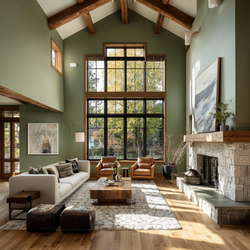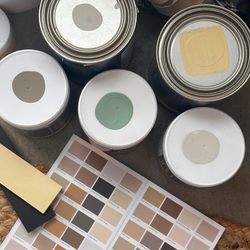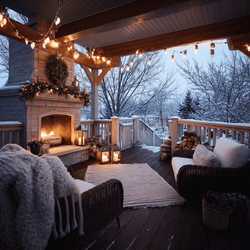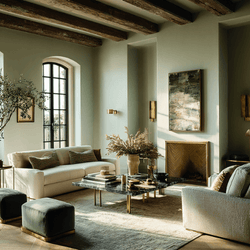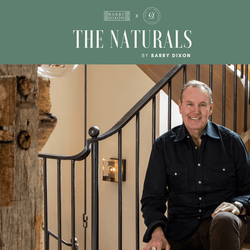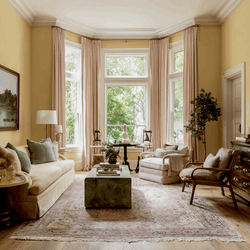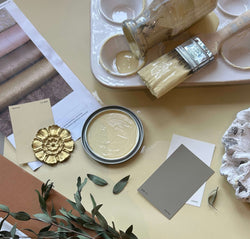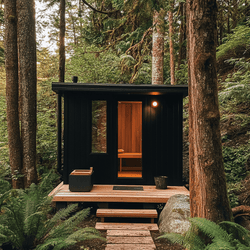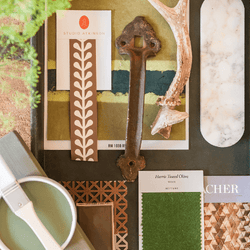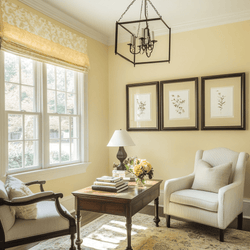Biophlia: Connecting Nature + Design
Humans have an innate connection to nature. We physically need its resources to survive and thrive. Think of how a sunny day can literally brighten your mood. Architects, builders, and designers are integrating nature into their designs, from office buildings to homes to hospitals and city centers.
Biophilia, which literally means “love of life,” an affinity for living things and the natural world. The “biophilia effect” describes any of a number of positive impacts experienced when this affinity is evoked through a sensory experience of nature: sight, sound, smell, or feel.
This “biophilia effect” describes the many positive impacts during the sensory experience of nature: sight, sound, smell, or feel. In architecture and design, there has been a trend toward creating more harmonious, thriving, and nurturing environments. Creating environments that connect us to the natural world results in less stress, more creativity and higher functionality.
Famed designer Frank Lloyd Wright used the term “organic” to describe his architecture.
From his Prairie buildings built in the early 20th Century, to his later works such as Fallingwater (1939) and the Guggenheim Museum (1959), Frank Lloyd Wright’s designs were inspired by principles found in the world of nature. Wright designed each of his buildings as an organic whole, from the structure to the interior details, so he could create a sense of harmony.
In his 1908 essay, “In the Cause of Architecture,” Wright identified several features of organic design:
- Simplicity should be a guiding principle in design
- Buildings should be designed in harmony with the natural landscape
- Furniture for a building should be designed in harmony with the building
- Colors should be inspired by the world of nature
- Materials should be appreciated for their natural qualities
- The spaces of a building should be opened up
You don't have to be an award-winning architect to incorporate biophilic design into your space.
5 Ways to Design with Nature:
1. Plants + Greenery
Plants are not only a beautiful and vibrant addition to any design, but they also provide an essential integration of nature by increasing oxygenation levels. Today, designers and architects are taking plant design to a new level by making green a literal part of interior and exterior design. There is a rise in the popularity of vertical gardens like these living, self-watering walls from biophilic designers, Sage Green Life.
Another unforgettable example of biophilic design can be seen Khoo Teck Puat Hospital in Singapore. The abundance of greenery and natural light makes the building feel less like a hospital and more like a forest -- and is a prime example of what biophilia looks like when several patterns work together.
2. Sustainable Materials
Not only are they less harmful to the environment, but natural materials actually contain lower VOCs (volatile organic compounds) than manufactured materials, making them healthier inside and out. Sustainable materials, which include raw elements like stone and reclaimed wood and other recycled resources are securing their position as style icons as well, adding a unique design element from rustic retreats to city lofts to luxury restaurants.
Trend Alert: Recycled, stone chipped surfaces that create a "scatter" effect.
3. Organic Shapes, Textures + Patterns
Organic shapes are not regulated by any pattern or dimensions; they draw inspiration from nature, often illustrating the abstract non-linear lines that you'd see on a pebble, a cloud or the soothing waves of the ocean. Their irregular forms are intrinsically relaxing and "perfectly imperfect".
4. Modern Earthtones
As you probably know, color has a profound effect on our psyche. Depending on the color and shade, they can evoke feelings of calm and tranquility, increase our heart rate or enhance creativity. Currently, baked earthy colors are on trend with their rich, pure tones that provide a feeling of groundedness and balance. Their muted yet powerful color emanates natural beauty, from the soft rose-colored skies to rusty desert hues to pebble grays and deep, mysterious ocean blues.
View our Baked Earth Color Palette here!
5. Natural Light

Perhaps the single most important element in any design is light. Look to maximize this feature by installing skylights atriums and windows. Using full-spectrum paint provides color that reflects the full range of natural light so it's luminous and nuanced throughout the day (because it uses no black, it reflects the light rather than absorbs it), creating a harmonious palette.










